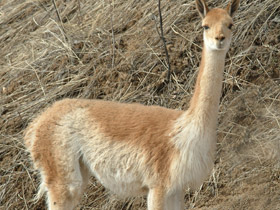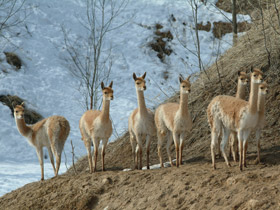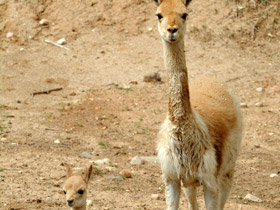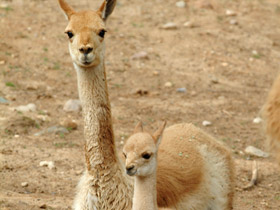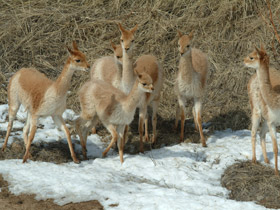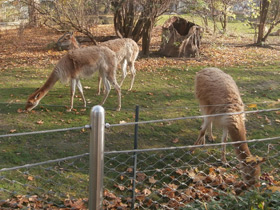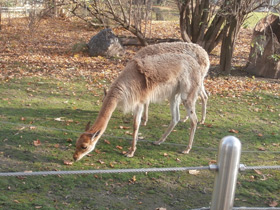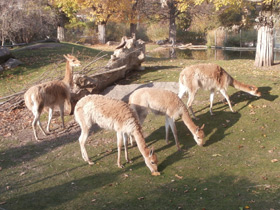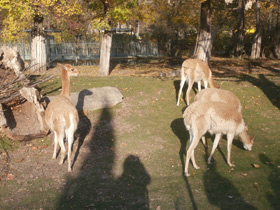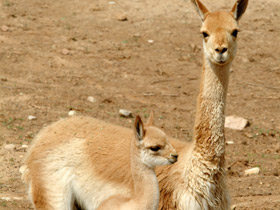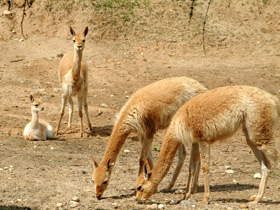Vicuña Vicugna vicugna
The vicuña is the smallest and most graceful of all tylopods. The shoulder height ranges from 85 to 120 cm, and the weight is about 60 kg in males, and 40 kg in females. Vicuña has a thin flexible neck covered with short fur, and a large white patch on its chest that is formed by longer hairs. The history of the relationship between vicuñas and humans is quite dramatic. In the times of Inca Empire, about 1.5 million vicuñas inhabited the Andes mountain range. Local people treasured the wool of these animals and periodically rounded up thousands of vicuñas in order to shear off their precious wool and weave light and warm clothes for the grand members of their tribes. Wild vicuñas are still shorn by local people. In the centuries following the fall of Inca Empire, herds of vicuñas (and guanacos) were decimated as domestic cattle replaced them on pasturelands, and by 1965, only about six thousand vicuñas remained in the wild. This species was included in the IUCN Red List of Threatened Species in 1973, when slaughtering for wool and meat put the population on the verge of extinction, but conservation efforts have since allowed significant recovery of vicunas, and their population is currently estimated at 200 thousand animals. The wool of vicuñas is highly valued because these animals have one of the finest fibres in the world, at a diameter of 12 micrometers – which is eight times thinner than a human’s hair. (The fibre of cashmere goats is 14 to 15 micrometers.) The clothes made of vicuña’s wool are fantastically warm and very light.
Vicuñas live in family groups consisting of a single dominant male and 5 to 15 females. Bachelor groups are staying on their own territory, separately from harem groups. The dominant male marks out two territories connected by the path. The feeding daytime territory is the larger of the two, with the separate sleeping territory found in a safe place at a higher altitude. The male protects its territories and the females from solitary males. When a stranger male intrudes into his territory, dominant male would run towards the intruder and spit at him with a chunk of half-fermented food. The conflicts often end up with a fight, and the males bite, push and kick each other with their feet. Gestation in females lasts about 11 months and a single calf is usually born in rain season. The newborn weighs 4-6 kilograms and after a few hours, it is able to follow its mother. The female nurses her calf for four months but starts bringing supplementary grass to her baby on the second week of its life. Young vicuñas do not respect territorial boundaries and may come to the neighbouring territory to play with other calves. By the age of 11 months young vicuñas are chased away from their family group, which makes them join bachelor groups of vicuñas (females leave their family group at a later stage). Young vicuñas reach sexual maturity by the age of two years. At this time, populations of vicuñas are still declining under the pressure of poaching and deterioration of grasslands due to overgrazing by domestic livestock but about 100 thousand animals are still found in the highland deserts of Peru, Chile, Brazil and Argentina. Scarce vegetation and harsh climate are hardly tolerated by many animals but vicuñas have become well adapted to such conditions

















